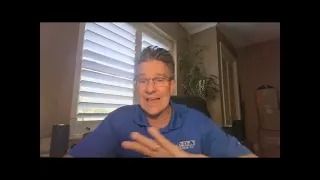By Didier Malagies
•
06 Nov, 2024
It’s a big week for the U.S. economy as the 2024 election takes place and monetary policymakers are meeting to decide what to do next about interest rates. For mortgage professionals who’ve been dealing with uncertainty of late, more clarity could soon emerge. Mortgage rates have been rising quickly in recent weeks, dashing hopes for growth across the purchase and refinance lending channels. According to HousingWire’s Mortgage Rates Center , the average 30-year conforming rate stood at 6.88% on Tuesday. This figure has jumped 16 basis points (bps) over the past week , 26 bps in the past two weeks and 57 bps since Sept. 18, when the Federal Reserve cut benchmark rates by half a percentage point. The average 15-year conforming rate, meanwhile, grew to 6.55% on Tuesday — up an eye-popping 27 bps in one week. Conditions aren’t expected to improve in the short term, according to HousingWire Lead Analyst Logan Mohtashami. “Mortgage rates are heading higher unless the spreads are fantastic today,” he wrote Tuesday. “The election data will create some wild swings, but the ISM (Institute for Supply Management) service report was a big beat of estimates, which made yields higher this morning after the report was released.” Some help is expected Thursday in the form of another Fed rate cut. According to the CME Group’s FedWatch tool , about 95% of interest rate traders believe the federal funds rate will be lowered by 25 bps. And there is a 77% chance of another 25-bps cut in December, which would bring the overnight rate to a range of 4.25% to 4.5%. “Assuming a 25-basis point cut in November, the September FOMC projections imply one additional quarter-point cut in December,” Sam Williamson, senior economist at First American, said in a statement. “However, additional upside surprises on inflation or employment data could influence the Fed to consider taking the December cut off the table. In contrast, accelerated economic weakness or a rapid slowdown in inflation could prompt the Fed to take a more dovish approach to policy normalization.” While Tuesday is Election Day, the results of the presidential race between Kamala Harris and Donald Trump may not be known immediately. The contest is expected to be extremely close and is likely to be decided by a handful of battleground states , including Arizona, Georgia, Michigan, North Carolina, Pennsylvania and Wisconsin. The presidential race, along with control of the House of Representatives and the Senate, could also factor into interest rate movements in the short term. Survey data released Tuesday by Redfin found that 38% of early voters factored housing affordability into their choice between Harris and Trump. About one-third of respondents believe that rates will decline during a Trump presidency, compared to one-quarter who think the same under Harris. And more respondents believe rates will rise under Harris (32%) versus Trump (28%). ICE Mortgage Technology reported this week that lower interest rates during the third quarter led to higher levels of home equity lending. Home equity withdrawals across both second-lien mortgages and cash-out refinances reached a two-year high mark in Q3 2024. But even with a collective $48 billion in originations for these two categories from July through September, ICE reported that U.S. homeowners are touching only 0.42% of their tappable equity — the amount they can borrower against while keeping a 20% equity stake in the home. The 10-year average extraction rate is 0.92%. Second mortgages are 26% below their historic utilization rate, while cash-out refis are 69% below normal. ICE noted that “elevated interest rates have been a deterrent to homeowner equity utilization in recent quarters, as 30-year mortgage rates climbed at times into the high 7% range, curtailing cash-out refinance activity, and the average introductory rate on second lien home equity lines of credit ( HELOCs ) rose above 9.5%.” If Fed policymakers continue on their rate-cutting path, however, this could make home equity loan products “more affordable and more attractive,” ICE concluded. “Since the Fed began its latest cycle of rate hikes, the monthly payment needed to withdraw $50K via a HELOC more than doubled, from as low as $167 per month back in March 2022 to $413 in January of this year,” Andy Walden, the company’s vice president of research and analysis, said in a statement.





